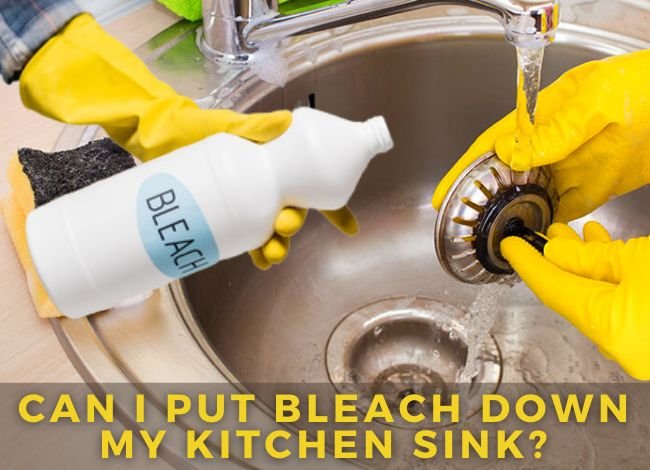Last Updated on December 14, 2023
Bleach is a powerful disinfectant that can kill germs and bacteria. Yes, bleach can be used to clean a kitchen sink, but it’s important to use it safely and properly. Never mix bleach with other cleaning products if you have a stainless steel kitchen sink, as it can cause discoloration or rust.
How to clean a kitchen sink with bleach?
Bleach can be effective for cleaning sinks, but it’s important to use it safely and properly. Here are some tips for using bleach to clean a sink:
- Wear gloves to protect your skin and eyes from bleach.
- Dilute the bleach with water according to the instructions on the bottle. The recommended ratio is usually bleach:water=1:10.
- Clean the sink thoroughly with soap and water to remove any dirt or debris.
- Apply the diluted bleach solution to the sink with a cloth or sponge. Be sure to cover all surfaces, including the sides, bottom, and drain.
- Allow the bleach solution to sit for several minutes.
- Rinse the sink thoroughly with water to remove all traces of bleach.
- Dry the sink with a clean towel or cloth.
How long should bleach be left in the sink?
It\’s generally recommended to allow the bleach solution to sit for at least 5 minutes to work effectively. Why? Because this kills any germs and powerful bacteria present in the sink. Always wear gloves to protect your skin and eyes from the bleach.
Why should you pour bleach down your sink at night?
However, it is important to use caution when handling bleach. You can follow the instructions on the bottle. For better results, you can let the bleach sit in your sink overnight. Buy Why at night? Because it can clean or kill any bacteria you have in the sink and drain pipe. Using bleach at night also helps break down grease and fats in the kitchen sink.
It is also important to keep bleach away from children and pets. So store it in a safe place out of reach. If you have any concerns about using bleach in your sink, it may be safer to use a different cleaning product. You can also book a professional cleaning service that may cost around $50–$80.
Will bleach damage the PVC pipe?
Yes, bleach can potentially damage PVC pipes if it is not used properly. PVC (polyvinyl chloride) is a type of plastic that is commonly used for drain pipes because it is durable and resistant to many chemicals. However, bleach can potentially cause discoloration or weaken the plastic over time. So avoid using bleach on older or weak PVC pipes.

How to disinfect the kitchen sink without bleach?
There are several ways to disinfect a kitchen sink without using bleach. Here are a few options:
- Disinfectant spray
Use a disinfectant spray or wipes that are specifically designed for kitchen use. These products are typically effective against a wide range of germs and bacteria. They are also safe to use on most surfaces.
- Homemade disinfectant solution
Make a homemade disinfectant solution by mixing equal parts water and white vinegar. This solution can be applied to the sink with a cloth or sponge and allowed to sit for a few minutes before rinsing.
- Baking soda
Use a mixture of baking soda and water to scrub the sink. Baking soda is a natural abrasive and can help to remove dirt and grime while also helping to disinfect the surface.
- Hydrogen peroxide
Use hydrogen peroxide as a disinfectant. Hydrogen peroxide is a powerful germ-killer and can be applied directly to the sink with a cloth or sponge.
Be sure to rinse the sink thoroughly with water after disinfecting to remove any residue.




